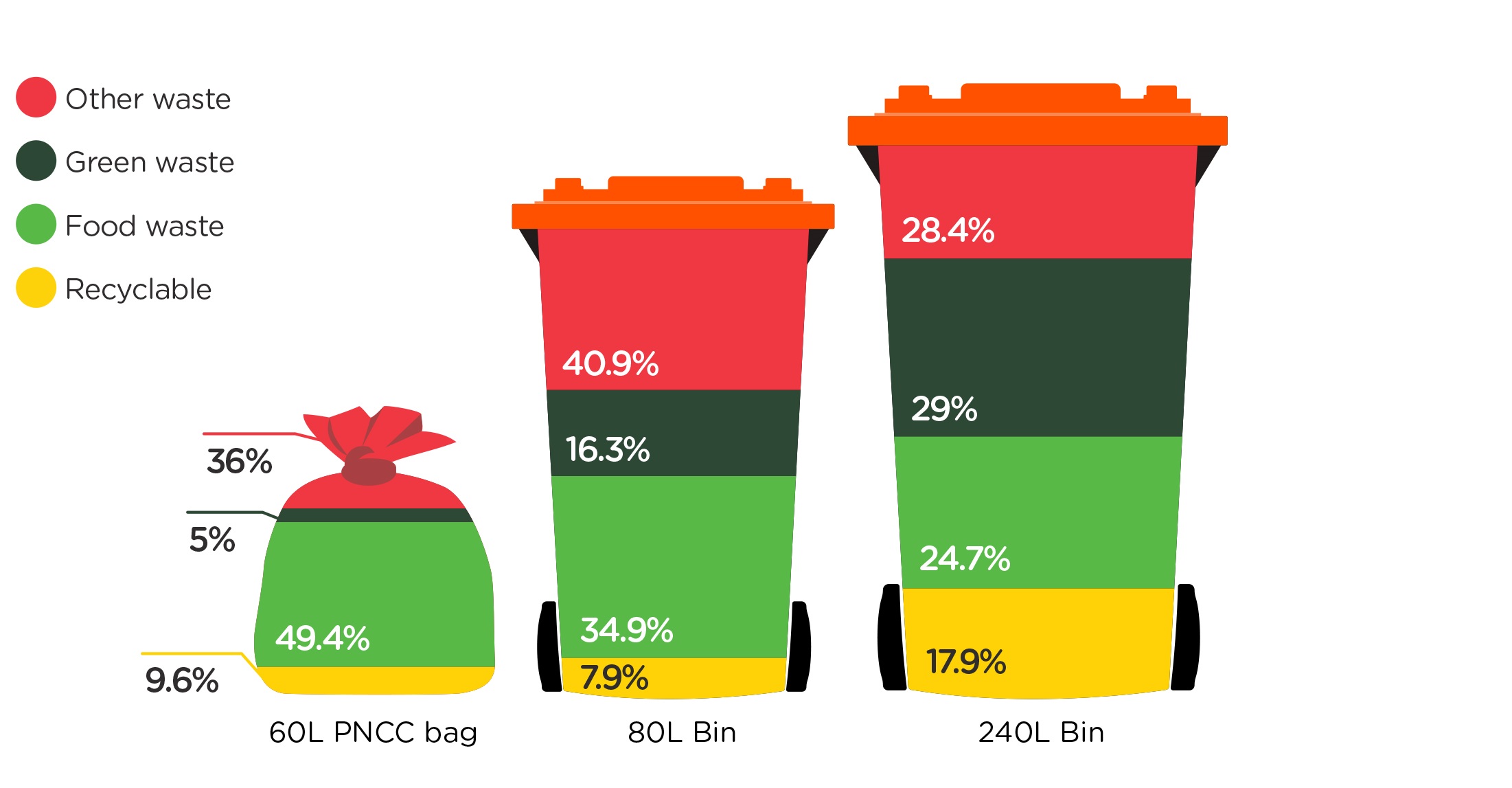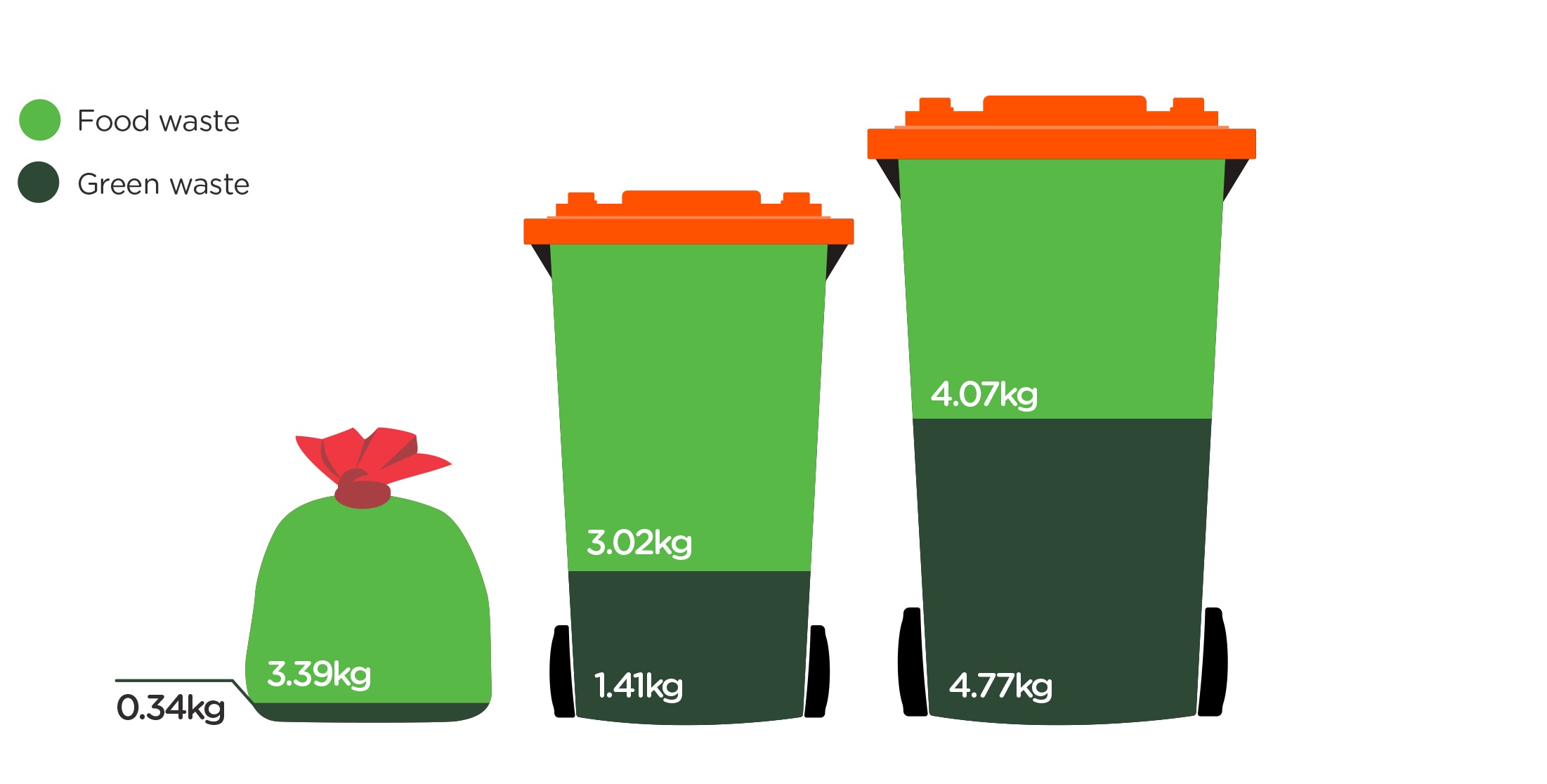Palmy's waste problem
How much waste does Palmy create? Read the results of our latest audit here.
In 2022, Palmerston North sent nearly 55,000 tonnes of waste to landfill. Almost half (46%) was potentially divertible, which means it could have been reused, recovered, recycled or composted.
This 55,000 tonnes comes from household kerbside waste collections, the construction and demolition sector, industrial or commercial activities, and residents taking bulk loads to the transfer stations. Nearly a third of the waste going to landfill was collected from households at the kerbside.
Many households use wheelie-bin services provided by private companies, with only 22% of the city using the Council's rubbish bag collection. The remaining 38,000 tonnes of the waste going to landfill includes waste from construction and demolition, industrial and commercial sources and waste taken to the transfer stations by city residents.
Are Palmy businesses and residents good at minimising waste?
To determine how well we're doing in terms of waste minimisation, it's useful to compare ourselves with other parts of New Zealand.
- The total amount of waste per person that we send to landfill the district is mid-range: about 607kg per year.
- When we look at how much waste from households we send to landfill, we generate about 215kg per person, per year which is also mid-range compared to other districts.
- When it comes to household recycling we recycle about 51kg per person at the kerbside, which is on the low side – and households with large privately collected wheelie-bins recycle less than households using Council's rubbish bag collection service.
Surveys of the rubbish picked up at the kerbside, and the rubbish that is sent to landfill, show there's a large percentage that doesn't need to go to landfill and could instead be recycled, composted, or recovered in some other way. If these went to other uses, we'd save 25,000 tonnes of material from going into the landfill.
A key issue is the different way households that use the Council rubbish collection manage their waste, compared with households that use wheelie-bins. The bigger the bin, the more food and green waste they throw out.

The average household using a bag for rubbish puts out 3.39kg of food waste per week, compared to 3.02kg for a household with a small wheelie bin, and 4.07kg for a household with a large wheelie bin.

The most dramatic difference is in green waste – a household using the council collection puts out 0.34kg per week, compared to a small wheelie bin which on average has 3.02kg, and a large wheelie bin with 4.02kg.